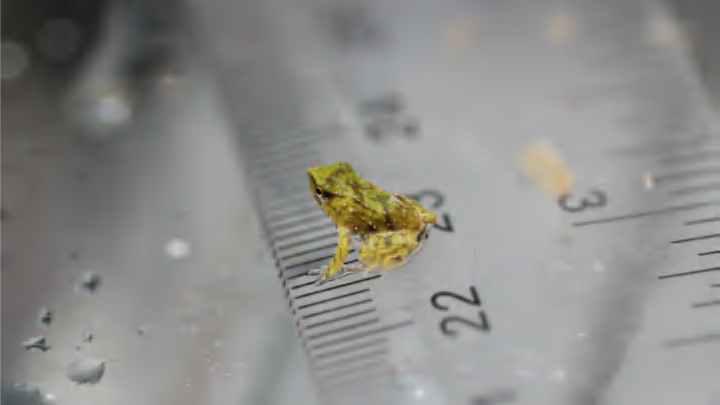Frogs are fascinating animals. Some of their adaptations are just plain bizarre, from hatching offspring through their backs to breaking toes to produce claws. One of the freakiest amphibians is the Southern Darwin’s frog: The males of the species carry their tiny tadpoles in their vocal sacs as they mature. London Zoo recently welcomed 33 froglets that developed this way, marking an impressive milestone in the endangered species’ conservation journey.
The tiny Southern Chilean species is on the brink of extinction thanks to the chytrid fungus that runs rampant in its natural habitats. Moreover, surveys confirmed that 90 percent of monitored populations have declined due to amphibian chytridiomycosis, a disease caused by chytrids.
Conservationists from the Zoological Society of London (ZSL) partnered with several organizations, including the Chilean non-profit association Ranita de Darwin NGO and Zoo Leipzig, a German zoo, to transport chytrid-free Southern Darwin’s frogs to the London Zoo from the wild. To do this, the team spent five days in Chile in October 2024 collecting specimens from their home. Fifty-three frogs underwent health checks for the fungus before they were cleared for relocation to the UK.
Eleven of the male Darwin’s frogs were carrying their young in their vocal sacs—a unique practice of the species that allows them to protect their offspring. The females will lay their eggs on land, and the adult males will carry the tadpoles in their mouths until they reach the froglet stage. For this reason, members of the Darwin’s frog family are also known as “mouth-brooding” frogs. (The family’s scientific name, Rhinodermatidae, derives from “rhinoceros-nosed” and refers to their pointed snouts.) The 11 frogs rearing their young this way raised a total of 33 froglets that now call London Zoo home. Even when they’re fully grown, the frogs will weigh less than 2 grams and measure under 3 centimeters.
Now, the tiny frogs will get to grow up in refuge while conservationists figure out how to make their native home safe for the species once again. More research is needed to better understand the chytrid fungus and the best ways to contain it. To learn more about the frog’s incredible journey from the forests of Chile to Britain’s capital, watch the ZSL documentary “A Leap of Hope” below.
Read More About Animals:
